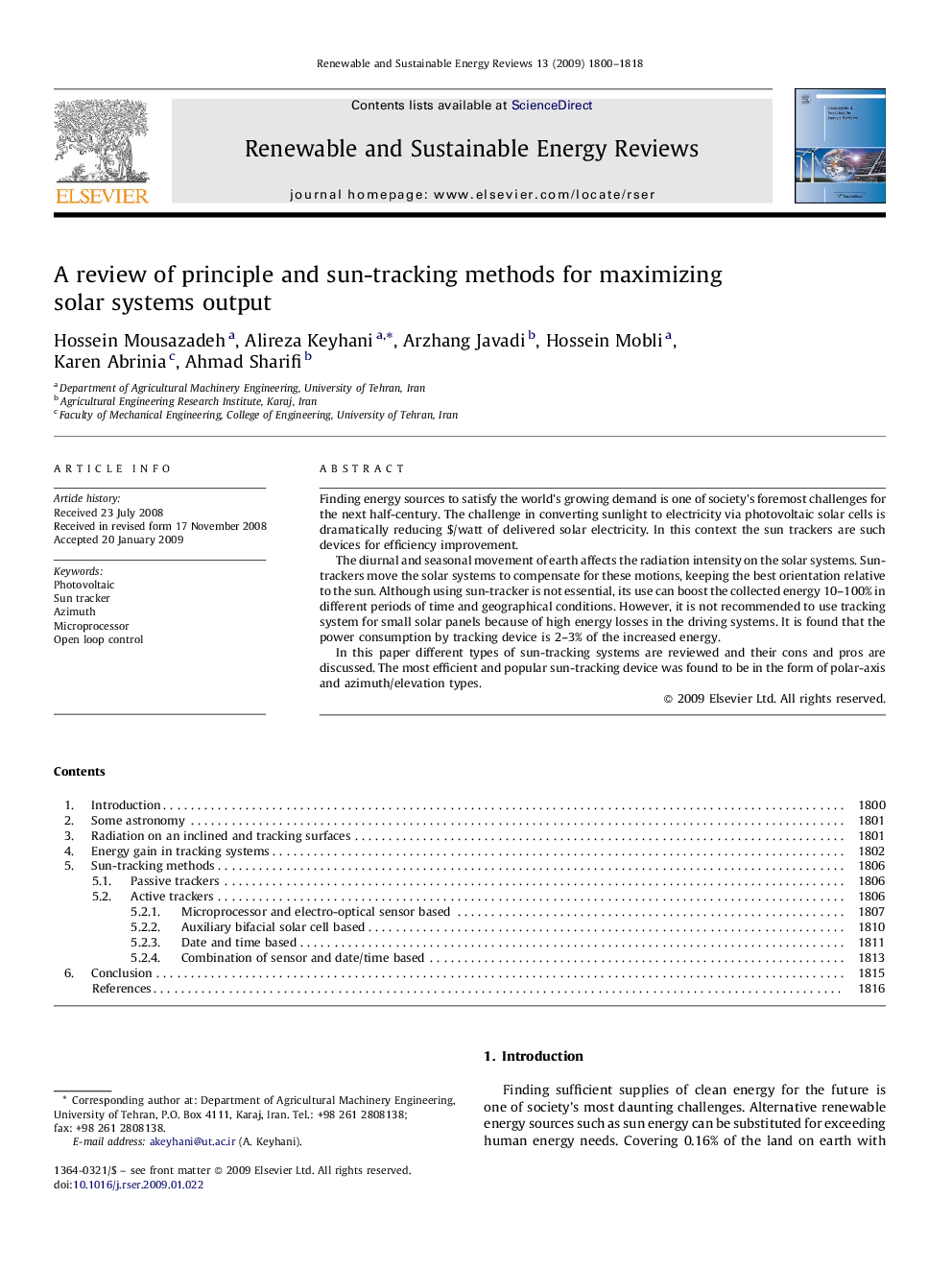| Article ID | Journal | Published Year | Pages | File Type |
|---|---|---|---|---|
| 1751991 | Renewable and Sustainable Energy Reviews | 2009 | 19 Pages |
Finding energy sources to satisfy the world's growing demand is one of society's foremost challenges for the next half-century. The challenge in converting sunlight to electricity via photovoltaic solar cells is dramatically reducing $/watt of delivered solar electricity. In this context the sun trackers are such devices for efficiency improvement.The diurnal and seasonal movement of earth affects the radiation intensity on the solar systems. Sun-trackers move the solar systems to compensate for these motions, keeping the best orientation relative to the sun. Although using sun-tracker is not essential, its use can boost the collected energy 10–100% in different periods of time and geographical conditions. However, it is not recommended to use tracking system for small solar panels because of high energy losses in the driving systems. It is found that the power consumption by tracking device is 2–3% of the increased energy.In this paper different types of sun-tracking systems are reviewed and their cons and pros are discussed. The most efficient and popular sun-tracking device was found to be in the form of polar-axis and azimuth/elevation types.
